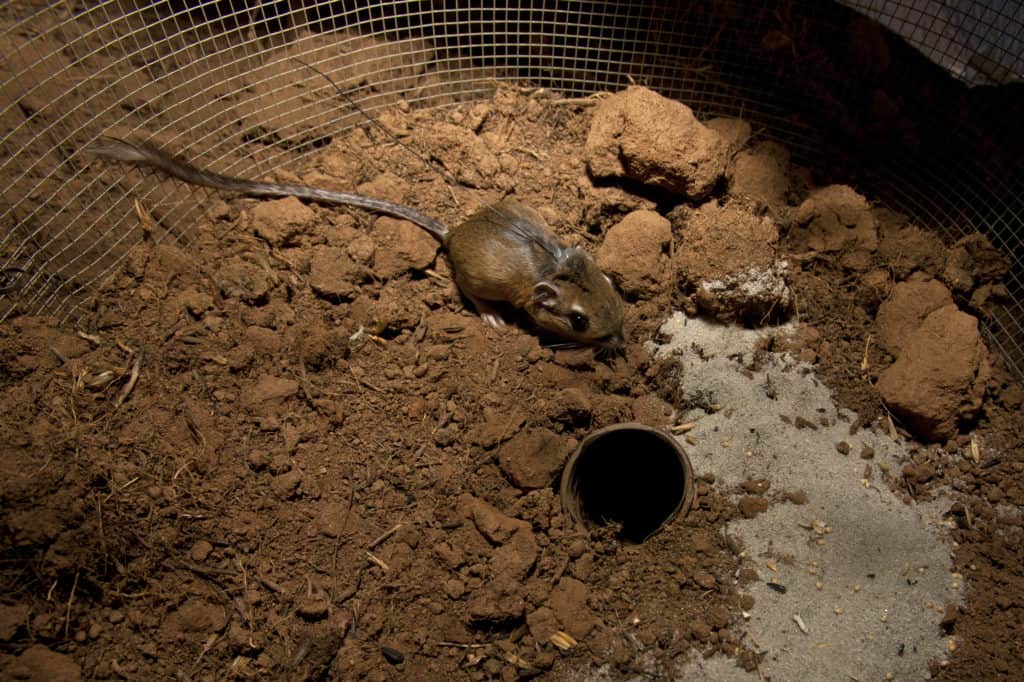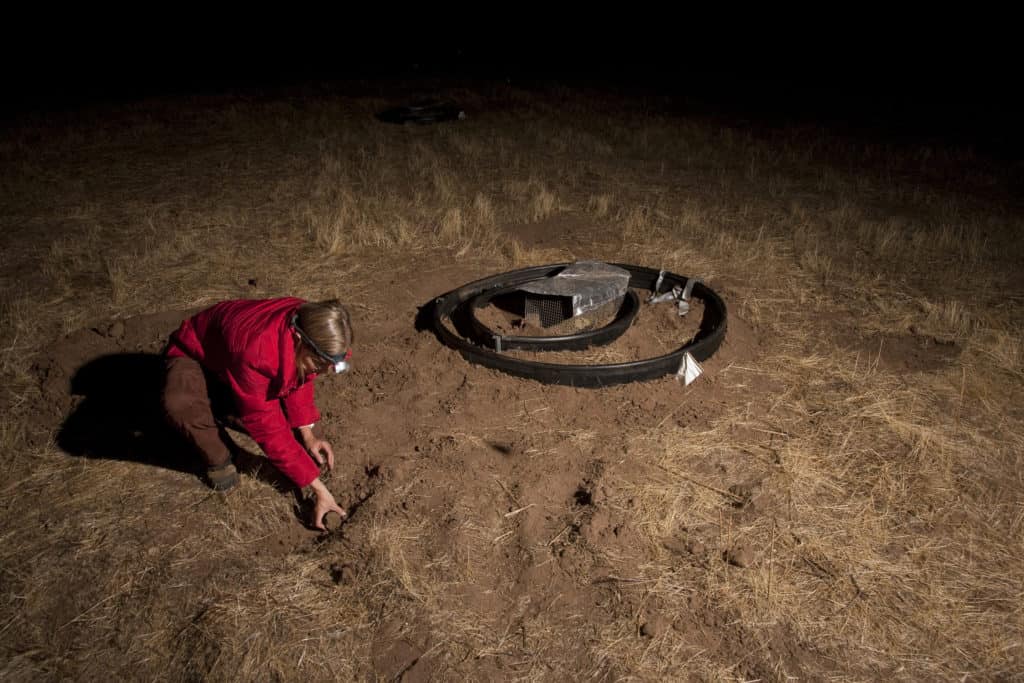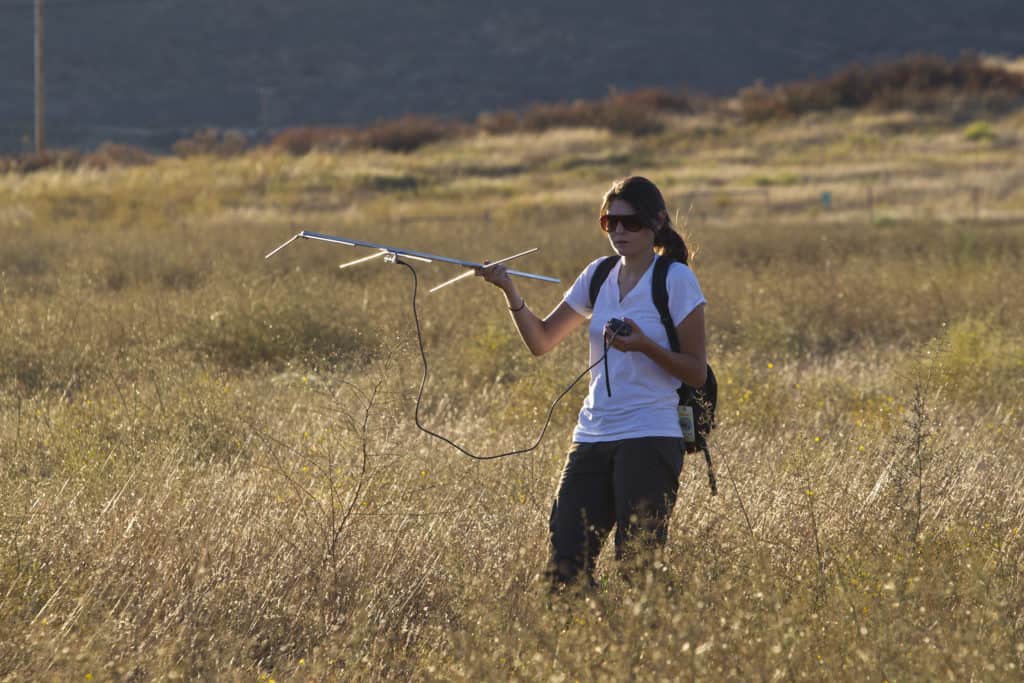Share this article
The keys to successful endangered rat neighborhoods
Nothing can ruin moving into a new area more than finding out you have bad neighbors. Recent research shows neighbors are just as important for endangered kangaroo rats in Southern California as they are for humans—a finding which may be important in conducting successful translocations for the species.
Stephen’s kangaroo rats (Dipodomys stephensi) have been steadily declining for decades as development and farming has taken over their habitat. The encroachment of invasive grasses in San Diego and Riverside counties, where the rats are endemic, can also make once good habitat unsuitable.
The rats have been listed as endangered by the U.S. Fish and Wildlife Service since 1988. In 2008, The San Diego Zoo Wildlife Alliance began translocating kangaroo rats to new areas in an effort to stymie population loss. The team’s success came from their sensitivity to the rats’ behavior, particularly their preference to stay near the same neighbors, they found.
“Survival was extremely high,” said Debra Shier, associate director of recovery ecology at the San Diego Zoo Wildlife Alliance.
The conservationists moved 54 rats in 2008 and another 44 in 2009. They pulled those rats from three different populations that were facing impacts from humans. Some came from a camping area parking lot, some from a metropolitan water district area slated for development, and another group from private land where the owners were planning to convert the native habitat into a vineyard.
In a study published recently in Conservation Biology, Shier and her co-authors moved all of the rodents to nine different areas in the Southwestern Riverside County Multi-Species Reserve, which was created in 1992 to mitigate for habitat loss associated with the creation of the Diamond Valley Lake reservoir.

A translocated rat in an artificial burrow during soft release. Credit: San Diego Zoo Wildlife Alliance
Stephen’s kangaroo rats typically prefer open grasslands or forblands with mixed patches of vegetation and open areas. The rats communicate with each other and set up and maintain their territories by sandbathing, rubbing their scent against the soil in open patches. But invasive European grasses and forbs cover entire areas, leaving no open spaces for the rats. These exotic plants are also more densely packed, making it harder for the kangaroo rats to get around.
The California Department of Forestry and Fire Protection helped clear some of these grasses using prescribed burns, and workers removed the invasive vegetation in other areas. “We prepared the site for the kangaroo rats by clearing all the non-native grasses and forbs,” Shier said.
Kangaroo rats live in underground burrows, a little like single-family homes, near the burrows of other family groups. Before gathering up founders from the three populations, the researchers observed where individuals were living using night vision goggles. They mapped out neighborhoods, recording which rats lived where. As they collected the rats, they marked them with color-coded ear tags, placing individuals in acclimation chambers that mimicked the kind of burrows they dug.

A landscape divider (the black tubing) surrounds an electrified cage.
Credit: San Diego Zoo Wildlife Alliance
Then, they moved the rats to their new home in a release site cleared of invasive plants. The researchers moved some of the kangaroo rats in exactly the same neighborhood they lived in at their old site. In other areas, they moved rats randomly.
The researchers kept and feed them in acclimation chambers and surrounded the whole release site with electric fencing to protect them from predators like coyotes (Canis latrans). They also surrounded each acclimation chamber with a landscape divider to keep ants away, which can predate young rats.
They fitted rats with a radio-transmitter backpacks to track their movements for three months after their release. They gave the rodents a week to get used to their new home, then removed the top portion of their acclimation chamber, the landscape divider and electrified fence.
“The transmitters allowed us to collect really good data on movement post-release and see how long it took them to settle in their new site,” Shier said.
The team found that the kangaroo rats translocated with neighbors had 90% survival in those first three months. Some were eaten by barn owls (Tyto alba), while others dispersed out of the receiver site.
Initially, there were less problems for some rats than for others. It seemed to come down to the rats’ neighbors. After release, the rats that were already neighbors before spent some time checking each other out, but moved less after translocation and settled into old routines more quickly. “The neighbor-translocated rats spend more time digging and foraging, whereas the non-neighbor rats spend more time fighting,” Shier said.

Researcher tracks translocated rats fitted with radio-transmitters. Credit: San Diego Zoo Wildlife Alliance
While these rats are often solitary creatures, “they have a rudimentary social system,” she said. Rats that were translocated into a new space with new neighbors had to establish relationships with other translocated kangaroo rats and rebuild a local pecking order on top of establishing a new territory, gathering up a seed cache and coping with the additional stress of the move to a new area.
Furthermore, research shows that Stephen’s kangaroo rats are often more likely to mate with their neighbors than rats that live farther away. “[Our translocation] would have failed if we hadn’t moved them in neighbor groups as evidenced by the differences in reproductive success,” she said.
The researchers conducted long-term surveys of the translocated population, collecting genetic material from tissue samples each year from 2010 to 2013 and again in 2017. Their data show long-term success of the translocation. The newly established population of kangaroo rats increased in numbers before leveling off. Shier said the area may have reached carrying capacity and now appears to have gone through a population cycle.
“All indicators, both demographically and genetically, indicate this is a viable population,” she said.
Shier said that she’s unaware of another study that reveals the long-term viability of a translocated population over such a relatively long period compared to the lifespans of the creatures in question. The genetic data they took doesn’t show fine enough detail to reveal whether the rats that live in this new population today maintained something close to the neighborhood plan of their parents and grandparents, but Shier said that observations suggest that offspring often carve out part of their mother’s territory.
“We documented that the animals that were present at the site were, in fact, descendants from the translocated animals,” she said. “We had not just one-year offspring but descendants for generations.”
Header Image: A Stephen’s kangaroo rat with a coded ear tag. Credit: San Diego Zoo Wildlife Alliance








